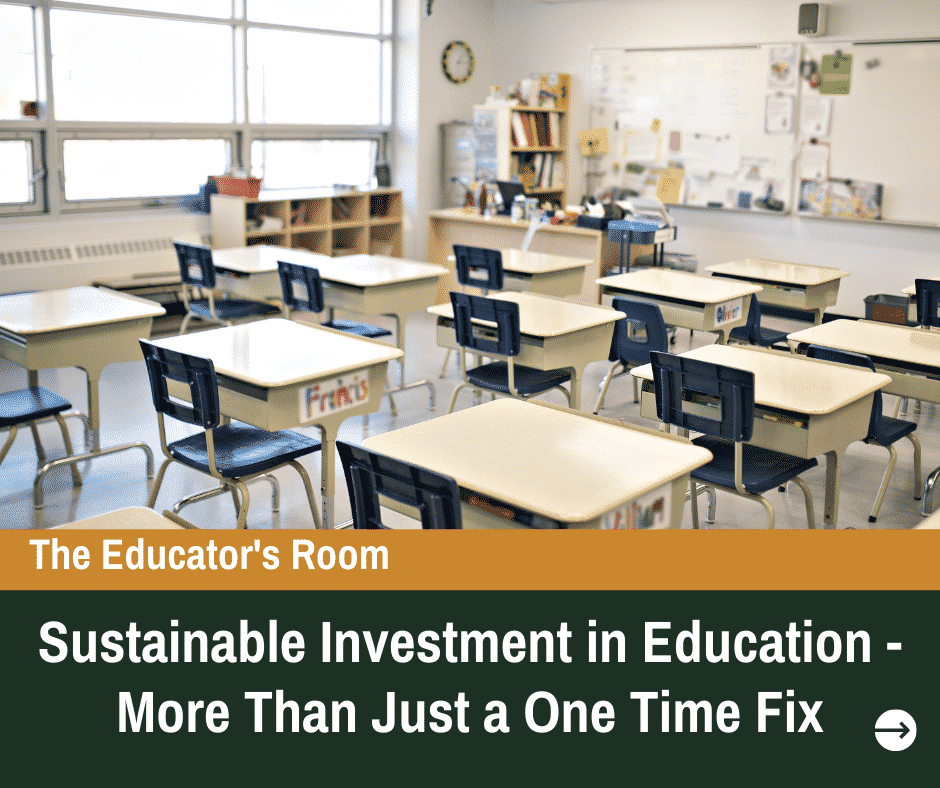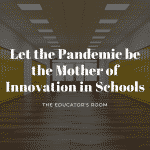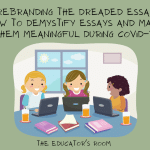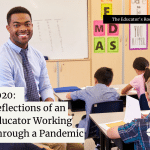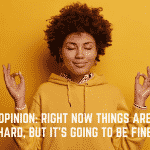Well, our day has finally come! Or has it? We have an unprecedented amount of money we have all been begging for! But, as educators, yet again, no one is asking the “experts in the room” how to spend it. Education has always been about droplets in a seemingly never-ending sea of inequities, where teachers continue to create miracles no matter what is thrown our way. Often thanklessly, we sojourn on, and dream for a future where education will finally be fully funded. “What do you need for you and your students to be successful, not just during and after this pandemic, but for the sustainable future of education?” Imagine a world where the powers that be ask a teacher, or even a student, what they actually need in order to be successful?
[bctt tweet=”Imagine a world where the powers that be ask a teacher, or even a student, what they actually need in order to be successful?” username=””]
The American Rescue Plan Act of 2021 (ARPA) is providing over one hundred and seventy billion, yes that is billion with a capital “B”, specifically for education to address issues created by Covid-19. The fallacy here is that everyone knows these issues are in no way new. “The truth is, the pandemic has simply exposed problems that previously existed within many school systems and, in many cases, amplified them” (Education Week, 2/10/2021). Achievement gaps, learning losses, technology, facility and food inequities, class size issues, and teacher retention, none of these are a surprise to those of us in the trenches every day.
Like everything in education, money can provide solutions to many problems, but even the unprecedented amount of money allocated through the ARPA means little to the institution of education if it is going to be one-time funding. “State and district leaders now have the opportunity and responsibility to use these funds to address short-term needs associated with the pandemic and to invest in the structural changes that will, over the long term, make schools more equitable and whole-child focused” (Learning Policy Institute, 3/11/2021).
What are some possible long-term solutions? What is the humble opinion of one teacher? What do I dream? I’m glad you asked.
Class size reduction.
Our district website states an average 24:1 student to teacher ratio, but our High School is currently at 38:1. I have yet to find a teacher who hasn’t wished to be able to spend more time with each student and on each assignment. There are hundreds of studies on how “smaller classes [lead to] higher achievement [which influences] narrowing the opportunity gap” (classsizematters.org/research).
Close the inequities in educational facilities.
There are schools in our district that either had no windows, had windows that did not open, and had poor or malfunctioning ventilation systems long before the pandemic. You can provide as much PPE and extra sanitization as you want, but if a virus is airborne, poor ventilation systems in schools need to be the number one priority.
Counselor to student ratio reduction.
The American School Counseling Association (ASCA) recommends a 250:1 Student: Counselor Ration. Our High School currently has a 650:1 ratio. Enough said.
Create High School Teacher Education Academies/Education Preparatory Programs.
Our school currently has Health, Engineering, Law Academies, and International Baccalaureate Programs. I know for a fact that there are teachers and students that are interested in fully-funded teacher education programs. There are many local college programs that would also partner. Further incentives could include students who are enrolled in the High School program receiving free access to college and credential programs. This would help to attract more potential teachers to the profession, ease student debt issues, and further create a pipeline to increase and sustain the dwindling teacher workforce.
Increase teacher pay.
The simple solution of providing an adequate living wage for teachers inevitably affects issues including diversifying the teacher workforce, addressing the teacher pipeline shortages, stabilizing the teacher workforce, and simply attracting professionals in many fields of study to give back to future generations. I would advise people to read “Wage gap between teachers and other college graduates exacerbates teacher shortages” to find further evidence to make this case (Ed Source, 5/1/19).
Create and sustain tutoring and intervention programs that are year-round.
Addressing the “learning loss” during a pandemic ignores the yearly learning loss teachers deal with after every summer. One could even argue that if struggling freshmen were caught in that first quarter, the intervention would be much more proactive, rather than the current reactive nature of “credit recovery”, sometimes as late as junior year.
Create enriching and truly “robust” summer programs that include bridge programs, as well as programs for students who want to “get ahead” if they choose to.
In the words of Francesca Warren, founder of the Educator’s Room and school board member, summer school programs should be “more than remediation, but acceleration”. Gone are the days of simply credit recovery. This is the opportunity to create truly “revolutionary” and “transformational” educational programs.
Create before school and after school “programs”, in every sense of the word.
These programs would be intended to not just help working parents with child care but would provide essential mental, educational and physical support to students via socio-emotional learning, remediation, re-teaching and homework help, and even physical education. You could also add in the afternoon and/or evening meals to help combat the food inequalities which have also come to the forefront.
In California specifically, and everywhere for that matter, implement a requirement that Ethnic Studies be taught, beginning in elementary school.
Our High School currently has no ninth-grade history curriculum. While my son has been blessed with a kindergarten teacher that is all about that culturally relevant pedagogical life, I know for a fact that everyone is not as privileged. Elementary, Middle, and High Schools should all be teaching Ethnic Studies. Why does students have to wait until college to actually “learn” about the past through truly diverse historical lenses?
Create continued incentives for companies that include Power providers, Wi-Fi providers, and those who are at the forefront of the Tablet/Laptop world to ensure technology inequities are addressed, and part of a mandated company partnership with school districts.
Living in California, we have rolling blackouts and yearly disasters, let alone those students who have a continual battle with spotty WiFi and inconsistent functioning tablets. There is no reason why any student has to deal with technology issues on top of other inequities that get in the way of being successful in school.
In California, abolish the Windfall Elimination Provision.
This antiquated law discourages experts in many corporate fields who might never consider leaving the workforce to enter education in fear of losing the social security benefits they have already paid into (https://www.calstrs.com/post/windfall-elimination-provision).
And while we are dreaming big, fund every single grant on Donors Choose since the majority of those grants get to teachers, students, and classrooms to fulfill immediate needs (donorchoose.org).
Yes, these solutions may be familiar to some, and far-fetched to others, but there is research behind how nearly all can benefit more than just students who have been traditionally marginalized in this system that sometimes seems like a never-ending game of red light green light. Will the playing field ever be even? Probably not, but systemic change is much more effective when one is trying to do more than just put band-aids over gaping wounds. Even if those band-aids are made of expensive material, in this case, the ARPA, it is still not large enough to heal the root of many of the issues in education. We need more than just an expensive “cover” of the problem, but a full-on surgery of the system, one that will help our systemic injuries not only heal but end up in a better condition than before. “Policymakers have this once-in-a-generation chance to refashion our public schools to ensure that they help all students achieve their full potential” (Learning Policy Institute, 3/11/2021). So why not start by asking the “experts in the room”, who actually know what works in practice much more than theory, how this can best be accomplished? To be certain, the what, where, and how this money is spent will show if we really value education as one of the alleged priorities in America.